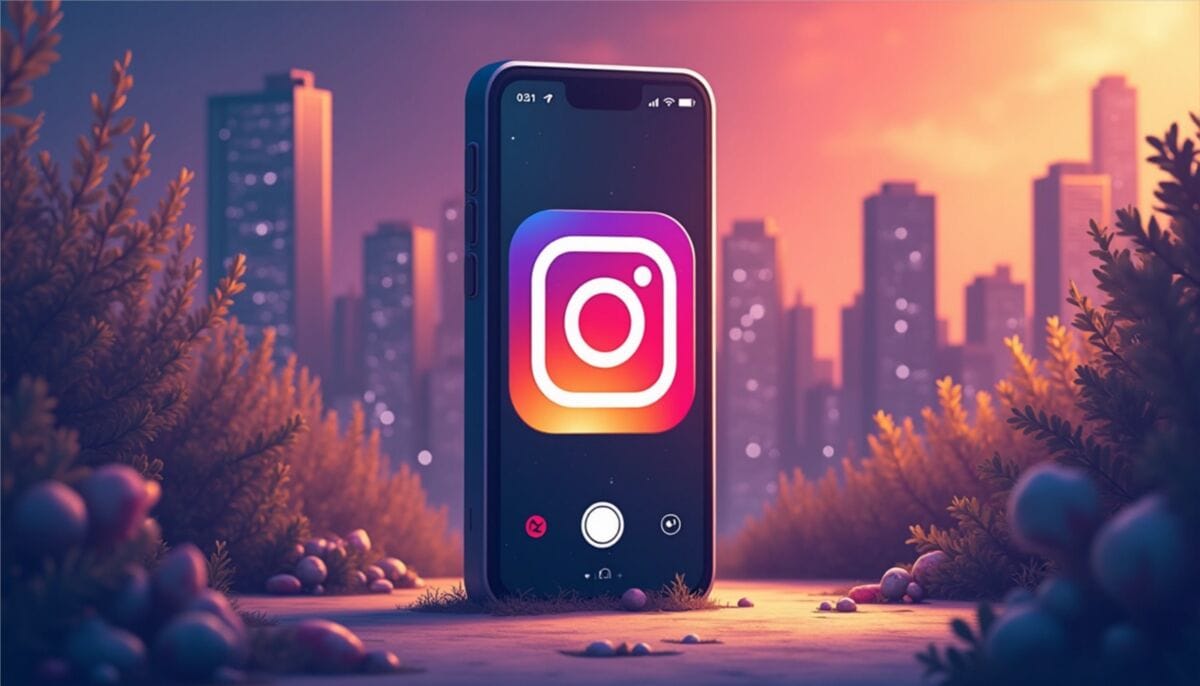Ever noticed how Instagram feels more like a search engine these days? You type a word, hit enter, and voilà—accounts, hashtags, places, Reels all lined up like search results on Google. Kind of amazing, right? For most businesses and creators, cracking Instagram SEO algorithm isn’t optional anymore. It’s the secret sauce to being discovered—organically.
Below, I spill the beans on what Instagram SEO really means, how it works under the hood, and the tactics that genuinely move the needle. Some of this I’ve tested myself. Other bits come from experts at Hootsuite, SEMrush, Later, and more.
First, What Is Instagram SEO?
At its core, Instagram SEO is the practice of optimizing your profile and content so that you appear in the app’s search results—and beyond.
This isn’t about paying for ads. It’s about choosing the right words, placing them strategically in your bio, posts, and metadata, and understanding the algorithm’s ranking signals
Once you nail it, your handle pops up when someone in, say, Boise searches “hiking boots,” or a Brooklyn foodie types “vegan tacos.” That kind of targeted visibility can add thousands of eyeballs without spending a penny.
Why does this matter? According to a recent Hootsuite experiment, SEO-optimized posts can earn up to 30% more engagement than non-optimized ones. That’s not chump change—it’s real ROI for savvy brands.
Why Instagram Search Feels Like Google
Think about your own habits. You’re not scrolling aimlessly anymore—you’re searching. Over 2 billion people use Instagram each month, and roughly 172 million of them are in the U.S. That’s a highly competitive pool. If you want to stand out, you need to play by the search-engine rules that Instagram has quietly rolled out.
Instagram’s search results can surface user accounts, captions from feed posts, reels, audio tracks, and hashtags and places.
Each of those is a pathway to new followers—if you know how to tweak your profile and content so Instagram recommends you when relevant.
Inside the Algorithm: Four Key Ranking Signals
Instagram’s own team (yes, Adam Mosseri himself) says four primary signals determine search ranking:
- Search text – The words people type into the search bar.
- User activity – Accounts you’ve engaged with, hashtags you’ve tapped, posts you’ve viewed.
- Popularity signals – Total likes, shares, follows, saves.
- Publish date – Newer content often gets a slight bump.
It’s a feedback loop: optimize for search text → get more engagement → the algorithm rewards you further.

Instagram SEO Tactics You Should Use
Understand Your Target Audience
Before you even pick keywords, do your homework.
Who are you talking to?
What questions do they ask?
Which phrases do they actually type?
Are they location-based—like “Seattle dog parks”—or broader—like “natural skincare”?
Grab tools like Google Trends or Instagram’s search bar suggestions. Hover over that search field, type “bike trails,” for example, and watch Instagram suggest tags and phrases. Jot those down. These are your candidate keywords.
Keyword Research for Instagram
Now that you’ve got a short list of words and phrases, it’s time to validate. Here’s a quick playbook:
Type each phrase in Instagram search bar and see the number of results under the Tags tab—higher counts usually mean more competition.
Use Google Analytics to look at terms driving traffic to your website; if they overlap with your Instagram niche, use them.
Plug in a seed term is SEMrush’s Keyword Magic Tool to get long-tail variations.
Now, group keywords into themes: “product features,” “how-to,” “locations.” You can then rotate these themes weekly or monthly to keep your content fresh.
A Quick Note on Hashtags vs. Keywords
In the early days, Instagram SEO was all about hashtags. Now, it’s shifting toward targeted keywords—especially in your bio and captions. But hashtags still matter. Think of them as secondary keywords that help Instagram categorize content.
Optimize Your Profile—Bio, Name, & Username
Your profile is ground zero for SEO. Spend time here.
- Username (avoiding random numbers): Make it memorable, but if possible, weave in a primary keyword (e.g., “Jane’s_Vegan_Recipes”).
- Display name: This field is searchable, too. If you’re a “Landscaping Pro LA,” slap that in.
- Bio: Write a crisp summary featuring your main keywords. – Sprinkle in secondary keywords (e.g., “gardening tips,” “drought-resistant plants”). – Add a Call-to-Action (CTA) linking to your latest Reel, website, or freebies.
A well-optimized profile could look like:
“Jane Doe | Vegan Recipe Creator Easy gluten-free desserts + weekly meal ideas 📍LA / Nationwide shipping 🎥 New Reel every Tue (👉 watch “9 Best Snacks”)”
That little blurb hits vegan, gluten-free, desserts, LA—all relevant terms.
Captions & Hashtags—Natural Integration
Let’s get conversational. Nobody wants to read a keyword salad. Your caption should tell a story or solve a problem. You can sneak in one or two primary keywords naturally. And end with 3–5 well-chosen hashtags (mix popular and niche).
Example:
“Ever tried avocado brownies? I was skeptical, but these ended up rich, fudgy, and 100% dairy-free. Swipe for the full recipe!” #AvocadoBrownies #DairyFreeBaking #HealthyDesserts
Notice how “avocado brownies” is in the text and hashtag. Variety keeps you from getting lumped in with boilerplate content.
Should You Bury Hashtags in the Comments?
Not anymore. Instagram CEO Mosseri confirmed the algorithm gives more weight to hashtags in the caption itself. So, post them up front and sprinkle them in.

Alt Text, Geotags & Audio Titles
Three often-overlooked touches.
Under Advanced Settings, write your own alt text (e.g., “Close-up of avocado brownies topped with chocolate chips”). This helps search and accessibility.
If you’re a local service or event, tag the location. Local searches are booming—over 30% of mobile searches have local intent.
For Reels, rename the track to include keywords like “Mediterranean workout playlist.” Audio is now searchable.
These micro-optimizations add up.
Content Pillars & Consistency
Pick 3–5 “pillars” that define your brand. A fitness coach’s pillars might be:
- Workouts
- Nutrition tips
- Success stories
- Mindset hacks
Then, rotate content within these pillars. Consistency (and clarity) tells the algorithm who you are—and makes it easier to rank for those topics.
One week you post a “5-Min Abs” Reel; the next you share a “Healthy Breakfast Hacks” carousel. Both get you closer to being seen when users search “core workout” or “diet ideas.”
Timing & Engagement Triggers
Yes, “when” still matters. While Instagram moved away from strict chronological feeds, early engagement indicates value. Aim to post when your audience is awake and scrolling.
Most tools (even Instagram Insights) will show bubble charts of “most active times.” For many U.S. audiences, that’s lunch time (11 AM–1 PM) and after work (7 PM–9 PM). Test your niche—your mileage may vary.
Pro tip: Drop a question in your caption. “Which flavor should I make next—lemon or raspberry?” Questions boost comments, and comments boost discoverability.
Leveraging Reels & Stories
Video is king. Video accounts for over 60% of time people spend on Instagram. To optimize them, use on-screen captions—Reels without sound have skyrocketed in views. Add keywords in your title and description. And encourage saves: “Save this for your next home workout.”
For stories, use the quiz, poll, and question stickers—even your story can pop up in a hashtag or location search if you tag wisely.
Collaboration & UGC
Partnering with complementary creators amplifies your SEO. When you co-host a Reel or joint giveaway, your post shows up to both audiences. The spike in cross-engagement can nudge the algorithm to recommend you to a broader pool.
User-generated content (UGC) is another gold mine. If customers tag you, share their posts in your Stories with a #testimonial. Each share is fresh, indexable content pointing back to you.
SEO and Instagram Pitfalls to Dodge
Nobody’s perfect. Some missteps cost precious reach:
- Overloading captions with the same phrase looks spammy.
- Irrelevant hashtags are a big NO–a “fitness” page hashtagging #comedy is a no-go.
- Watermarked Reels from other platforms (TikTok logos, etc.) get deprioritized.
- And search works only for public accounts—switch if you’re serious.
Steer clear of these and you’ll remain in Instagram’s good graces.
Monitoring Success & Iteration
Last step is to measure everything.
Use Instagram Insights or a third-party tool (Sprout Social, Later, SEMrush Social) to track profile visits from search, discovery via hashtags vs. location, and engagement lift after SEO tweaks
If “chia pudding tips” Reel performed 40% better, double down on that theme next quarter. If a hashtag underperformed, swap it out. Over time, you’ll build a content machine that seamlessly feeds the algorithm exactly what it wants.
Ready to own the Instagram search bar? Drop a comment below sharing your biggest Instagram SEO win (or fail).
Find out which social media platform has the most potential to grow your brand. And follow us on Facebook, X (Twitter), or LinkedIn for more SEO tips. Let’s grow together!
Sources
- www.blog.hootsuite.com/instagram-seo/
- www.resourcera.com/data/social/instagram-statistics/
- www.semrush.com/blog/instagram-seo/
- www.later.com/blog/instagram-seo/
- www.influencermarketinghub.com/seo-agency/instagram-seo-guide/
- www.rankingbyseo.com/blog/instagram-seo/
- www.seo.com/blog/instagram-seo/
All images created with AI



Reddit’s Search Makeover: Why Google Might Be Looking Over Its Shoulder
Which social media platform has the most potential to grow your brand in 2025?